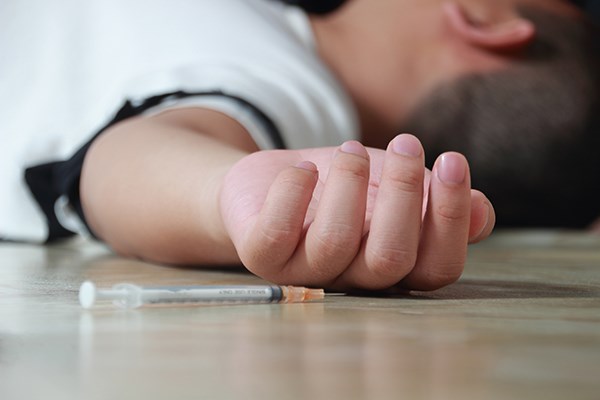A man has been partying and taking drugs with some friends. Suddenly he doesn’t seem quite right. He seems sleepy, has clammy skin, his pupils look like pinpoints and he seems to be having trouble breathing. He begins to have a seizure. This fictional drug user is overdosing on a mixture of heroine and fentanyl. If he quickly receives the antidote naloxone, it reverses the effects of the drugs on the body by restoring breathing within two to five minutes.
If he doesn’t get it, he could die.
Last week, the BC Drug Overdose and Alert Partnership released an opioid overdose response strategy in reaction to an increasing number of overdose deaths in B.C. Across the province, 465 people died from apparent illicit drug overdoses in 2015, according to figures from the B.C. Centre for Disease Control. That’s a 27-per-cent increase from the 366 deaths in 2014.Overdose deaths in B.C. increased by 50 per cent between 2010 and 2015, according to the centre.
Squamish General Hospital sees an average of seven overdoses per year, according to Dr. Mark Lysyshyn, medical health officer with Vancouver Coastal Health. Lions Gate Hospital sees 54 illicit drug overdoses per year, he said. Vancouver General Hospital sees more than 800 each year.
Many overdoses are from opioids such as heroin, morphine or oxycodone that the drug user likely didn’t know was laced with fentanyl.
About one-third of people who pick up harm-reduction supplies have been exposed to fentanyl, Lysyshyn said. About 75 per cent of those drug users didn’t know they had been exposed to it. The problem is that fentanyl is potent, he said.
A main recommendation of the BC Drug Overdose and Alert Partnership is to make naloxone more accessible with take-home kits for drug users to administer to fellow drug users or have used on themselves.
Currently, Squamish General Hospital and ambulance paramedics have the antidote, but no take-home kits are available.
The provincial government recently announced that firefighters can soon carry and administer naloxone for patients experiencing an overdose, but this has not been rolled out yet for Squamish.
Squamish Mental Health and Addiction Services is preparing to distribute take-home kits, according to Lysyshyn, but they are not yet available.
Typical overdose victims are men in their 20s, 30s or 40s, Lysyshyn said. “For all illicit drug overdoses, men have overdoses at about four times the rate of women,” he said. “But for fentanyl, men are having overdoses at about twice the rate of women.”
Lysyshyn said some drug dealers have been colouring their heroin supplies to show they have fentanyl in them, a move Lysyshyn welcomes.
“Most of the problems arise from the fact they don’t know they are taking fentanyl, so if somebody was buying a regular dose of fentanyl and taking it every day they would be fine, but if they are buying a regular dose of heroin every day and everything is fine and then one day their heroin has a different dose of fentanyl, it kills them.”
How long it takes for a drug user to show signs of overdose depends on the method of consumption and the person’s tolerance, Lysyshyn said.
Mayor Patricia Heintzman said she supports naloxone being readily available.
“We have the ability to save lives and we need to make sure we are doing what we can,” she told The Squamish Chief.
Other partnership recommendations include making naloxone available without a prescription; improving overdose prevention education and training; increasing the awareness of doctors so they review patients’ histories before prescribing opioids for pain management; and enhanced surveillance and data sharing.
“As a parent who has lost our only child to an accidental overdose, I agree with these recommendations, and I know these actions will help prevent more tragic deaths from occurring,” said Leslie McBain, a member of Mothers United and Mandated to Saving the Lives of Drug Users, a coalition of Canadian moms who have lost children to drugs.




